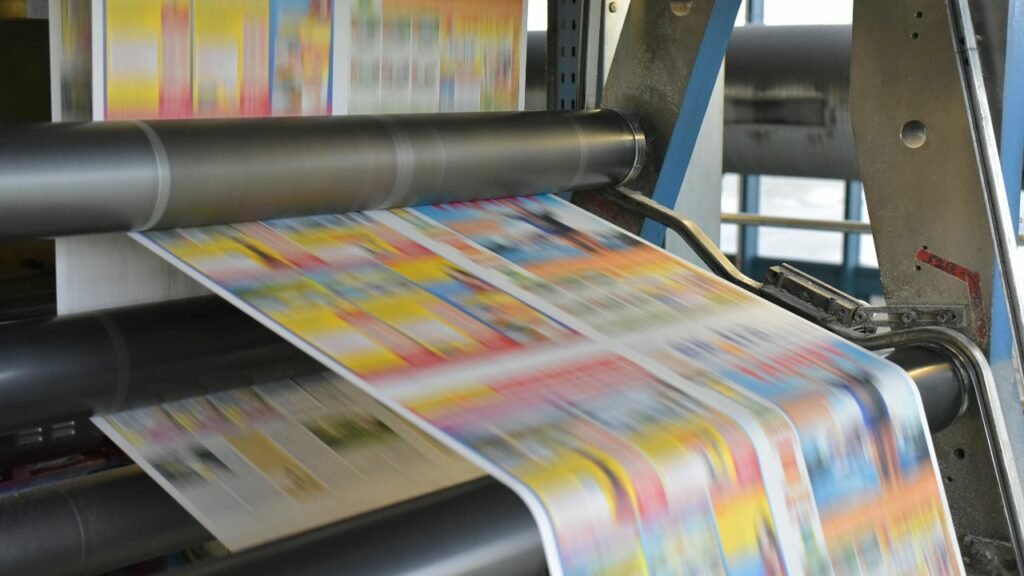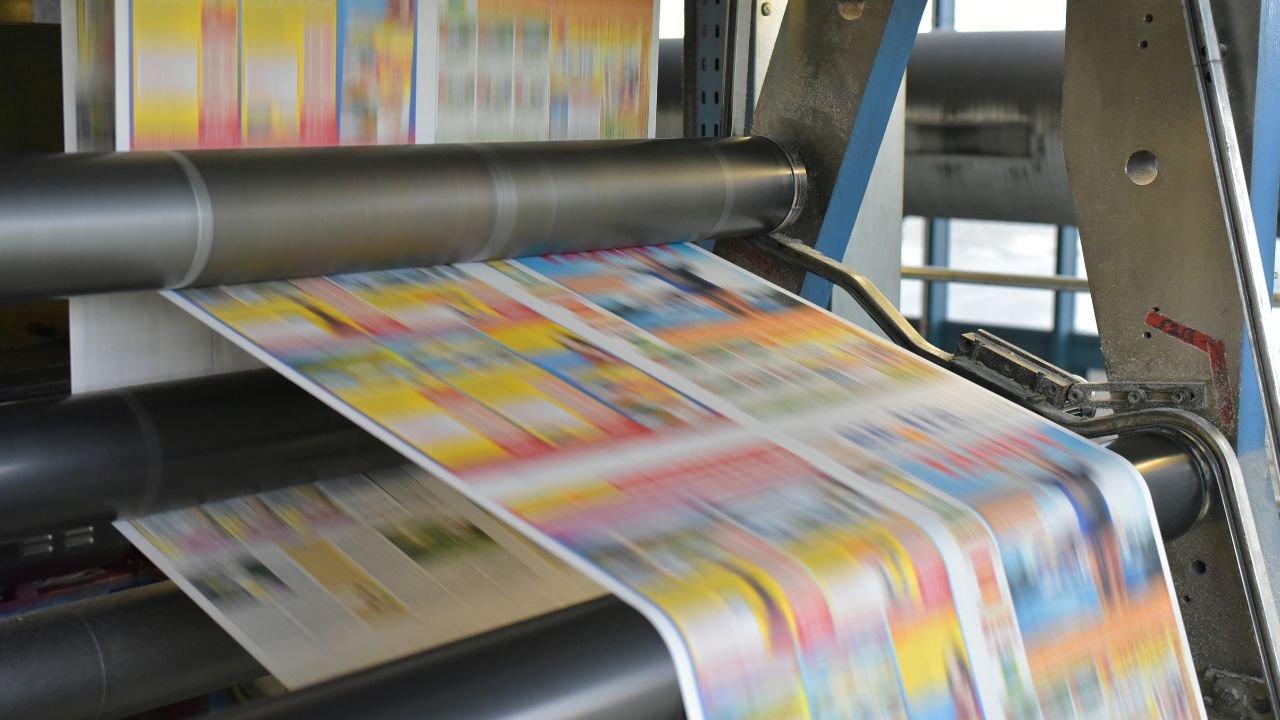While digital content dominates today, traditional print production continues to hold significance within the printing realm. It entails a range of tasks, from file design and preparation to the creation of printed materials, demanding precision and technical know-how. In this article, we will delve into the elements of print production and discuss its enduring importance in the printing process.

Understanding Print Production
If you’ve ever asked, “What is print production?” You’re in the right place. Print production encompasses all activities involved in transforming a design concept or artwork into printed materials. It involves prepress preparation, color management, proofreading, plate making, and final quality checks. The goal is to ensure representation and consistency in colors, images, fonts, and layouts across print media platforms.
Prepress Preparation: Establishing a Strong Base
Any design undergoes prepress preparation before being sent for printing. This phase includes verifying image quality and resolution in the design, ensuring the embedding or outlining of all fonts, and managing color spaces for reproduction.
Color Management: Infusing Designs with Vibrancy
A key component of print production is color management. Making sure your designs look just as vibrant in print as they do on the screen relies heavily on how colors are managed throughout the production process. Skilled print professionals employ color profiling methods by adjusting monitors based on press standards to ensure outcomes when printing designs. Color grading is an essential part of photo editing, which makes for a realistic look.
Proofreading: Correcting Mistakes
The significance of proofreading in print production cannot be overstated. It entails examining every element in a design for grammar errors or misplaced components before sending it for printing. Minor errors can cause issues once printed, underscoring the importance of thorough proofreading to guarantee top-notch final products.
Plate Making: Building Blocks for Smear-Free Prints
Plate-making is a key step in the printing workflow. It involves transferring images or text from design files onto plates, which are then used in the press to replicate the design onto paper or other surfaces. This step allows for ink control, ensuring color rendition and reducing smudging or blurring during printing.
Quality Control: Ensuring a Perfect End Product
Lastly, meticulous quality control ensures that all facets of print production are flawlessly executed. This involves examining printed materials for sharpness, readability, color precision, and overall aesthetics. Print production experts diligently follow quality control procedures to deliver a product that not only meets but surpasses expectations.
Technological Advancements in Print
Due to advancements, the printing industry has undergone transformations, and print production has not been left behind. The integration of computer software for design and processing has greatly enhanced efficiency and streamlined workflows. Design software tools like InDesign for layouts and Adobe ColorSync are vital for color management support for print production teams.
The Future Outlook for Print Production
Despite the age we live in, there will always be a demand for crafted printed materials, whether marketing collateral, packaging designs, or artistic prints. As technology progresses, bringing opportunities to the printing sector, traditional business practices and their orchestration will continue to hold prominence, supported by professionals specializing in various aspects of print production and online store for print shops.
Recognizing the Significance of Collaboration
Communication and collaboration are key elements in the realm of print production. Professionals such as designers, print specialists, and project managers must collaborate seamlessly to ensure a workflow. Accurate contact data plays a crucial role in keeping these teams aligned, and many rely on the best email verifier software to filter out invalid emails, reduce back-and-forth delays, and maintain consistency in communication. This small but essential step strengthens collaboration by keeping feedback loops efficient and reliable. Collaboration fosters creativity by facilitating idea exchange and promotes problem-solving when unforeseen hurdles arise. When working together, these individuals can make informed decisions on color selections, paper choices, printing methods, and finishing touches that will impact the final product.
Managing Budgets and Deadlines: A Project Manager’s Perspective
In print production, there is also a focus on managing budgets and timelines. In both printing settings and internal print departments project managers play a role in overseeing all aspects of a project. They work closely with clients to understand their needs, provide cost estimates based on materials and printing requirements, efficiently allocate resources to meet deadlines, and ensure that the final products are delivered within budget constraints.
Conclusion
Despite the dominance of media in today’s advertising and communication realms, print production continues to be important in the printing industry. From prepress preparations and color management to proofreading and plate-making processes, a robust print production workflow guarantees vibrant, precise, and high-quality printed materials. By embracing advancements while upholding expertise, print production remains an indispensable part of our visual landscape. Achieving excellence in this field necessitates learning and investment in knowledge as digital technologies continue to revolutionize aspects of the printing industry.

